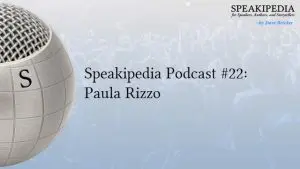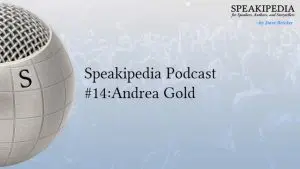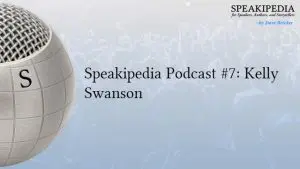 You threw a grand party but nobody came. Your novel is so good but you’re not selling books. What happened? You were supposed to appear on Oprah’s show. Terry Gross isn’t calling you for an interview. You may be an ace at managing dialog and avoiding clichés in your writing, but what do you know about the publishing business? Did you do the math?
You threw a grand party but nobody came. Your novel is so good but you’re not selling books. What happened? You were supposed to appear on Oprah’s show. Terry Gross isn’t calling you for an interview. You may be an ace at managing dialog and avoiding clichés in your writing, but what do you know about the publishing business? Did you do the math?
Notwithstanding the fact that Oprah’s Book Club has been off the air for years, the quandary is simple: Even if you set your seller commission at 20%, A $20 hardcover book delivers $4 to the bookstore and about $12.50 to the printer/distributor. Your cut is $3.50.
Most publishers give 50% of the cover price to the seller. Better bump your price up to $32! $16.00 goes to the seller, $12.50 goes toward printing and shipping, and you’re left with $2.50/book.
Did you publish through a vanity press? Add your “publisher’s” commission to the price of every book. And they‘ll be setting the price, not you.
Now figure in other costs: graphic design, typesetting, editing—and heaven forbid you should actually get compensated for your writing and research time. How many books will you need to sell at a given price point to break even?
If you want any chance of selling your book in physical retail bookstores, you’ll need to accept returns. With most POD-published books wholesaling at around $9 per book, imagine placing three books in every Barnes and Noble store. That’s 777 stores and 2,331 books. (2,331 books is a small print run. You’ll save money with offset printing but not much at that quantity.) At $9 per book, you’re risking $20,979. Sell an average of one book per store at $3 profit per book to make $2,331. Hooray!
But what about the books that didn’t sell? Retailers have limited space. After your book gets its 90 days in the spotlight, if it isn’t a big seller, it will get sent back so the store can put fresh bait on its hooks. So after three months, B & N returns 1,554 unsold books, expecting $6 per book (print cost) to be returned plus around $1 per book for shipping. $7 times the 1,554 unsold books equals $10,878 dollars you owe the printer. You’re out $8,547.
But most self-publishers don’t have to worry; big bookstores are like FM radio stations. You won’t hear many indie record artists on the air; the stations serve the major labels. Though your self-published book is probably in the major wholesale catalogs, if you don’t have a contract with a New York publishing house, your book will probably never get stocked; it’s a special order item. And if you set the seller commission at 20%, they might not want to hassle with ordering it anyway. Bookstores are in business; they’re smart to fill their limited shelf space with items they can make 50% commissions on.
The business metrics of independent bookselling are daunting and depressing. Certainly, the scenario reveals why traditional publishers are worthy of respect. Imagine how hard it is to make a profit in that environment!
How do big publishers do it? Part of their success has to do with overhead. If you own your own presses, keep designers and editors and typesetters on salary, run your own warehouses, and ship product by the container-load, the cost per unit goes way down. Big publishers don’t pay $12.50 for a hardcover book; they probably pay closer to $3.50. Have you noticed how light a trade paperback is? Those fractions of ounces add up to tremendous savings on shipping. Have you noticed how so many trade books use tiny type and narrow margins? Save 25 pages worth of ink and paper on each book and print in volume; the savings are significant.
Big publishers leverage fixed editing and design costs; they keep talent on salary. And they’re not worried about recovering costs for writing and research. Publishers pay the author an advance against royalties. Unless the writer has a track record of generating blockbuster sales, this advance is fairly small. If the publisher sells books, the writer receives a royalty for each one (a smaller royalty than the average POD publisher receives per book, but hopefully the volume will be higher) but only after the advance has been paid back to the publisher. If the book never gets market traction, the publisher’s expenses are capped; the risk is transferred to the author.
Mostly, big publishers succeed because they don’t “invest their money in a single stock”; they’re into “mutual funds”—large portfolios of books where profit is derived from average performance. Every quarter, big publishers offer a new catalog of fresh offerings. Last quarter’s slow sellers get backlisted. Big publishers’ catalogs include books that come from licensing deals with movie studios. If a publisher can ink a deal to release a book featuring the latest Disney princess, it’ll have a house writer and illustrator put the product together for guaranteed profits—because they’ve got the business clout to put a licensing deal like that together in the first place. Add to this a long list of perennial favorites, celebrity tell-alls, reissued classics that are long out of copyright, and access to a huge distribution network, and you have a recipe for profitmaking. Most traditionally published books don’t sell all that well, but they don’t have to; a few blockbusters combined with time-tested winners and celebrity trash can offset their losses handsomely.
You have how many books in your catalog? You have what kind of distribution network? Are you really set up to sell books?
You can dream all day about getting a big book deal, winning a Nobel Prize for Literature, and flying around the world on a glamorous tour, signing books for your adoring fans, but this kind of thinking is not what lies at the core of a sound business strategy.
So which path do you choose? A traditional publishing deal stands a (slightly) better chance of making you money, but you’ll wait two years to see your book released, and you’ll lose a certain degree of creative control (over things like cover art and typography). If your book gets backlisted, any efforts you make to market it will mostly benefit your publisher; you’ll find yourself doing the same work that self-publishers do—but (if you can believe it) for even lower royalties.
Of course, you have to convince a big publisher to take you on in the first place. I so often hear writers asking “which way should I publish?”—as if it’s simply a matter of choosing a fork in the road. You can choose to be a writer but when it comes to you publishing traditionally, that choice is not yours to make. And if you do knock on the gates of big publishing, unless you have experience and connections, you’ll want help. Figure in your literary agent’s commission, too.
And please don’t vilify publishers for this. An open submissions policy would wash them out to sea. Strategically placing book products in the market requires timing and selection. Publishers rely on the recommendations of agents and editors because they don’t have the time and resources to search for diamonds in the sand—not because they hate self-publishers or wish you anything less than success with your book. Big publishers are not holding you back.
Publishing, no matter how you do it, is a hard work, high risk business. Do the math. Understand the game.
If you want to treat publishing as a form of artistic expression, you’re fine. In the grand scheme of things, the (give or take) $5000 you have in your book is significant but probably not life-changing (though for some it’s admittedly an unimaginable luxury). If you’re on food stamps and welfare, I encourage you to write your book, but don’t risk your groceries in the publishing business. Art has never been a practical pursuit. Just as painters will buy paint somehow-some-way, and sculptors who have no money will work with found objects or scrap metal or beach sand, writers with something to say will find a way to share their stories. Heeding the noble call to express one’s art is admirable, important, and a valuable contribution to society—but good art is not necessarily good business. And confusing art with business is a classic recipe for deriving neither profit nor satisfaction from a venture.
Selling Books: Understand the Risk
If you want to treat publishing as a business, a single book has too low a profit margin to be a viable retail product unless you can get lots of readers interested. Do you take a risk on a public relations campaign? Maybe if you get on the radio and television, people will buy your book and you’ll cover your costs? Try lecturing or reading at non-bookstore venues that serve your reader audience (I write sailing stories so I’d set up a reading at a yacht club). If your topic is hot, a public relations outreach could be profitable. Or maybe you’ll only dig yourself in deeper? Sell 50 books to an event with 90 attendees; you’ll have a rough yardstick to gauge risk and interest by.
Selling Books: Sell Yourself
One potentially successful approach is to change the product. Books are a terrible retail product but speakers can be well paid. I have a client who does zilch to promote his book but he sold 1000 books at a single event and probably the same number of DVDs—for cash. He sells thousands more every year as he travels around the world speaking. Building up a speaking business is not easy but good resources and coaches are available. Probably, if you actually price it out, the investment involves no more time than writing a book and less money. If you can use your experiences and perspectives to inspire and entertain others, book sales will be incidental.
Perhaps you’re a contractor or consultant who will profit more from the credibility which comes from having “written the book on your subject” than from book sales? For example, I don’t sell many books, but when I show my books to people, I win contracts to design and typeset other peoples’ books. My books are expensive business cards, but I do make a profit in the publishing business indirectly.
Selling Books: Share the Love
An important promotional piece—blogging—involves lots of time writing and sharing articles related to your book. If you can build up a following (this blog now gets about 300–900 visits per day), you can build opportunities once you’re considered a thought leader. But you may not see results until you’ve written at least 25 articles per year for several years. Again, mileage will vary depending on public interest in your topic and the effectiveness with which you share your posts.
Selling Books: Aim for the Target
If you only have one bullet, careful targeting is key. What the “make money in publishing” books all gloss over is the fact that this approach works best for topically focused nonfiction books. Your novel for “general lovers of literature” may be first-rate, but it will be difficult to promote it to a well-defined audience. Do you know who your readers are and how to communicate with them? Do they hang out in a few online haunts? You might actually be better equipped to reach them than a major publisher.
Selling Books: It’s Not a One-Day Trip
It may be that your work doesn’t gain critical mass until your third or fourth or tenth book gets traction and encourages readers to see what else you’ve done. My fifth book has just arrived from the printer as I write this. I have no grandiose sales expectations for it, but I’m gaining experience and enjoying the journey.
Selling Books: EBooks are Cheap
Though I’m a traditionalist who loves the smell of ink and the feel of paper, the road to salvation for independent publishers is eBooks. Write your manuscript in Word and upload it Smashwords. That’s about as low-risk as it gets. If you want to save a larger piece of your pie and do it yourself, download a copy of free Sigil eBook editing software and make your own eBook. Upload to Amazon, Google Books, Apple iBooks, etc. As with writing, you may not recover the costs of your time, but bypassing the printing presses, bindery, and shipping means bypassing a heap of expense. If your eBook sells, you’ll have some funds to apply to a print venture and evidence that customers are interested.
Selling Books: Look Good on Paper
If you do insist (as I do) on ink and paper, at least leverage the creative advantages offered by print on demand (POD) technology. The cost to print a single, elegantly typeset book with comfortable margins and line spacing is negligibly higher. Why imitate the design efficiencies of trade publishing if they offer you no advantage? Too many indie publishers mistake big publishers’ risk mitigation design strategies for a useful aesthetic standard. Many others typeset with word processors and don’t even attain the low design standards of the New York houses.
Selling Books: What’s Really at Risk?
You have written a good book. That alone is an achievement. If you invested in an editor and a designer, you’ve honored your efforts by packaging your work professionally. Balance your energies between making noise about your story and working on the next one. If you have love in your life, food on your table, and a roof to keep you dry, you’re in the admirable position of being able to self-publish without real risk. You may have hit that point where the barriers to sharing and selling books have presented themselves, but the journey is not over and lesser writers than you have found their audiences.
Think. Write. Be creative. Innovate. Push. Reflect. If your book came into being inspired by forces other than a compelling business strategy, let its success and the measure of your reward be defined by criteria other than sales statistics. As with other great things in life, surrender to the mystery and follow the path your heart leads you on. Hasn’t that gotten you this far?
Selling Books: Do Your Homework
But apart from all the “kumbaya” and wind chimes, be realistic about what mountain you intend to climb and about how high you intend to go. If selling books is your objective, make sure your book is a compelling product. Start with an idea for something that will sell—and then worry about making it good. Be clear about who will buy it and why. If you want to write a “great book,” that goal is just as admirable—but think carefully about how much you want to bend your art to suit market tastes.
Being a successful writer and being a successful publisher are entirely different matters that require different kinds of homework. Great writers do the English. Great publishers do the math.





